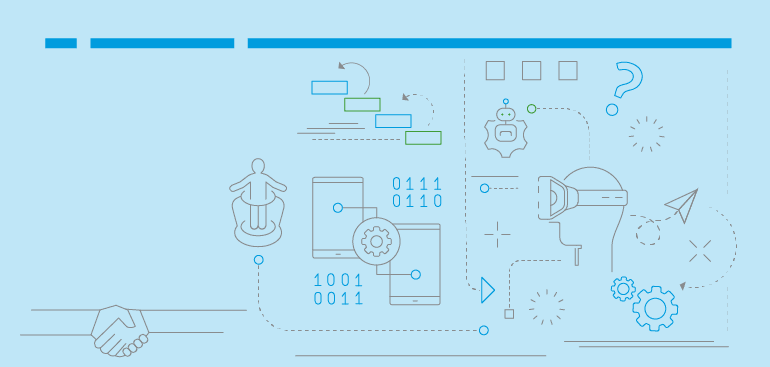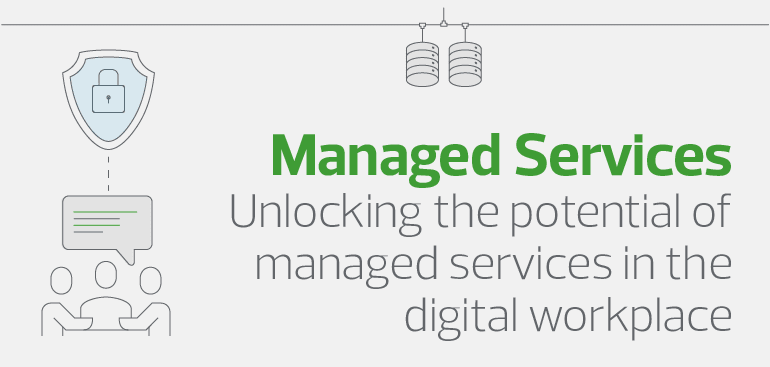When the quarantine first began, most companies were caught off guard. The immediate need was to set up a remote workforce, with some organisations handling this transition better than others. This was quickly followed by the need to stabilise cash flow to make sure more money was coming in, than going out - no small task during a global economic downturn.
These initial reactions provided a lifeline of sorts, at least in the immediate phase. But now that triage is over, many companies are recognising the potential to more fully embrace digital technologies in order to help build resilience for the medium and long term.
Not long ago, significant capital investment was required to build the infrastructure necessary to effectively run digital solutions. With the evolution of software as a service, a whole portfolio of solutions is now available on a “lease” basis where you pay as you go, and only for the technology resources required. With the right vendor, businesses can now easily scale their digital capacity (storage and processing power), up or down as needed. With investment capital in scarce supply now, this shift should allow most businesses to explore a wide range of digital opportunities.
A chance to expand your sales and marketing channels
In the digital era, businesses have been exploring and adopting new ways of marketing and selling their products or services. The Covid crisis has created a new imperative as traditional ways of reaching customers or clients have been restricted or eliminated.
From the outset, technology has offered businesses additional ways to grow their client base and connect with new audiences. By now we have all heard about restaurants which are offering services they hadn’t before, such as taking online orders and offering curb side pickup or home delivery. The same concept applies to middle market businesses in search of new supplementary revenue streams.
Online sales and marketing channels went mainstream years ago, with retail converting to an online model for the past twenty years. With the Covid lockdown, this online model is likely to be the only model that survives in that sector, and the same dynamic is playing out across many other sectors.
Expanding your sales and marketing reach through a greater focus on digital channels will require some out-of-the-box thinking. In addition to creating the new channels, you will also have other considerations, such as security parameters, pricing, marketing the new channel to your existing audience (or new ones), and customer service and support.
Here are some questions to get you started:
- When did you last assess your digital presence?
- Are you optimising your potential to reach new customers and markets?
- Should you consider shifting more of your business online?
- Does the shift in behaviours introduced with social distancing provide an opportunity to rethink how much physical office space you need, and does it still have to be in a premium rent district?
Use automation to streamline the workflow
Many people hear the term ‘automation’ and assume that machines are going to replace humans. The truth is actually much less sinister – automation simply removes repetitive, time-consuming tasks from our plate so that we can focus on higher value and more interesting activities. Automation can also provide alternatives when humans are either unavailable or when the activity puts humans in danger. For instance, the food supply chain has found itself incredibly understaffed since the lockdown. In response,
food suppliers have begun using robots to manage the harvesting, handling and delivering of food.
In the service industry, imagine a multidisciplinary team of people from your business is working on a pitch for a new account. Under the old model, the communication and project management would be handled by a combination of phone calls, emails, applications, and even paper documents. This is obviously not a very streamlined way to work. If one email or phone call gets missed, it can potentially delay or even derail the entire project.
There is software available now that collates the entire process into one workstream. A member of the team checks in first thing to see which actions are queued up and awaiting their attention. Scripts can even be built into the workflows to keep the whole process moving. If a member of the team has not responded to a prompt for action, the system can automatically send them a text or an email. Automation can help us ensure that the project is moving forward without consuming precious man hours or resources.
There are four major benefits to automation:
- Improved efficiency – Automation can cut processing time dramatically, reducing operating costs, increasing profit, and reducing demand on cash flow.
- Increased quality – Automated processes reduce the scope for human error and increase consistency in the outputs of the process so that they can be more predictable.
- Additional insights – By combining analytics with automated processes, a business can access value-added insights that would have been difficult to obtain previously.
- Social distancing – During a time of self-isolation as we are currently experiencing, automation can reduce or eliminate the need for human interaction.
Eliminating the paper trail, one sheet at a time
Digitising workflows and using cloud-based documentation and storage offers many benefits. Members of your team can access information through mobiles, laptops, and tablets, rather than waiting for someone to physically show up at the office to unlock the filing cabinet. And most importantly, there is the enormous potential for deep analytics.
Digitised businesses have a huge leg up in terms of predicting what their needs will be going forward. If a business has digitised records, it is much easier for the management team to look back at their business patterns over the last few months or years and identify emerging trends, benchmark their performance against peers, and even improve the accuracy of forecasting future business activity. It is definitely much more difficult getting those insights via paper, as it is too labour intensive.
A new digital business model can disrupt entire industries
Technology can offer businesses so much more than just improving existing processes or expanding sales and marketing channels. It also has the potential to form the basis for entirely new business models built on a foundation of digital technology. Companies such as Netflix, Google, and Uber not only developed new business models, they transformed entire industries.
That is not to say it is simply a matter of doing it. Exploring and adapting to a new business model requires out of the box thinking and complete commitment from leadership. This scale of change, while promising, can also be incredibly challenging for larger companies with established infrastructures.
However, when executed well, a digital strategy can create completely new industries, replacing existing, well-established players seemingly overnight. Case in point, streaming music platform Spotify transformed the music industry, and is now the leader in the streaming music category with over a third of market share. This is why so many business leaders are looking closely at digital. They realise that there is a real potential for new market entrants to disrupt their industry.
As it turns out, technology disrupting entire industries is not a new story – after all, it was the refrigerator that killed the ice industry in the 19th century.
Where there are opportunities, there are also challenges
There is a flipside to the Covid digital transformation story. Many businesses are facing the reality of having to make up for years of under-investment in technology in a matter of months or outsource their IT to third parties in order to keep up with the privacy and security concerns of a remote workforce.
There are tough choices being made and a relentless list of items to deal with. ‘These organisations just want to keep their revenue streams and cash flow moving’, says Ryan Duquette, Partner, RSM Canada Security and Privacy Risk Consulting. ‘The focus we’re seeing is on protecting the business, which means the risk aspect is not top of mind’. Unfortunately, these risks are increasing because cyber criminals know that organisations are vulnerable right now. There’s a balancing act where businesses are trying to protect systems but also scrambling to move organisations onto digital platforms in a secure manner.
‘People-centric businesses such as manufacturing or retail are shifting their personnel around to keep the lights on’, says Duquette. ‘Which means that a lot of resources may be absent or unattended. In IT, that means a lot of the basic security hygiene, such as patching and maintenance, is suffering while businesses try to stay afloat’.
And perhaps the biggest challenge of all? Buy-in from your people. Digital transformation is a team sport, and the sheer amount of change involved means everyone must be aligned on the end goal and what it will take to get there.
Opportunity amidst the chaos
Covid-19 has given businesses all over the world a wake-up call, forcing the adoption of digital technologies and digital business models onto the priority list. Once these organisations make the change, the world will never go back to the way it was.
While the Covid crisis is driving many businesses to the wall, for those able to weather the storm, there is an imperative to redesign their operations, become more resilient, increase efficiencies throughout the enterprise, and stimulate growth. In the long run, the challenges we are facing this year are giving us the insights and the wisdom to reimagine how our businesses will look in the future.







